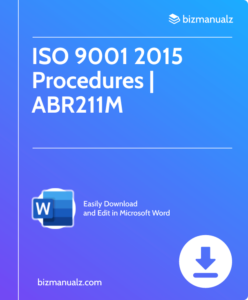What should a COO Know about Value Stream Mapping?

Value stream mapping is a really important tool for COOs. It helps them to see how their organization works, spot areas of waste, and decide how to improve. Creating a map of the value stream gives COOs insights into their business. They can use this to see where they can cut waste, reduce wait times, and make things more efficient. What should a COO Know about Value Stream Mapping?
What is Value Stream Mapping?
Value Stream Mapping is a powerful tool for COOs to analyze and enhance their company’s processes. By mapping the entire value stream, from raw materials to the customer, COOs can pinpoint inefficiencies and improvement areas. This tool provides COOs with a comprehensive view of the value stream, including process steps, cycle times, and inventory levels. This information helps identify roadblocks and overproduction or excessive wait times.
Furthermore, Value Stream Mapping helps COOs envisage an optimal future state by eliminating inefficiencies and optimizing processes. By recognizing opportunities to cut inventories and apply lean production techniques, COOs can create a plan to reach operational excellence.
For maximum benefit, COOs should involve cross-functional teams from different departments. This guarantees a holistic view and encourages collaboration. Plus, reviews and updates are necessary to keep the Value Stream Map up to date. It’s important to involve employees from different departments in the process. This way, COOs get a more complete view. It also encourages collaboration and understanding across teams.
COOs should give their teams training and support to help with value stream mapping. This will help them learn how to use it, and how to make continuous improvements. Regular reviews are also a good idea to make sure everything is on track.
Finally, COOs can use technology solutions to get real-time data. This lets them keep an eye on performance and make decisions based on the data. Technology helps them to spot problems before they become bigger issues. To get the most out of this tool, COOs should seek feedback from employees in each step of the value stream. This encourages communication and reveals interdependencies and optimization prospects.
Importance of Value Stream Mapping for a COO
COOs can unlock the potential of Value Stream Mapping (VSM) for optimizing their organization’s processes. It visualizes the entire value stream in an easy-to-grasp way, helping COOs find bottlenecks, redundancies and inefficiencies. Plus, it brings together cross-functional teams, fostering collaboration and understanding.
To make the most of VSM, COOs should:
- Collect data and analyze it for accurate mapping and informed decisions.
- Revisit and update value stream maps regularly to ensure continuous improvement.
- Integrate KPIs into initiatives to promote accountability.
By following these steps, COOs can make VSM a crucial part of their success. It leads to improved efficiency, reduced costs, enhanced customer satisfaction and sustainable growth. So, don’t get lost in the stream of value – use it to your advantage!
Steps to Implement Value Stream Mapping
Implementing Value Stream Mapping requires a series of steps. They will help to analyze and improve a company’s value stream. A COO can then gain insights into their organization’s processes and identify areas to enhance.
Here’s a 6-step guide:
- Identify the Value Stream: This could be a full process, or just a segment from your organization.
- Assemble the Team: Form a team from different departments involved in the value stream.
- Map the Current State: Use visual representations, like flowcharts or diagrams. Capture inputs, outputs, time taken, and any bottlenecks.
- Analyze and Identify Improvement Opportunities: Look for ways to reduce lead times and eliminate non-value-added activities.
- Design the Future State: Create a future state map. Include improved processes and KPIs to measure progress.
- Develop an Action Plan: Set out tasks, initiatives, responsibilities and timelines.
Value Stream Mapping is not a one-time exercise. Regularly review and update your maps as changes are made and impacts measured. It was developed as part of the Toyota Production System and is now widely used to enhance organizational performance.
Common Challenges and Pitfalls
COOs must be aware of the potential pitfalls they may face when implementing Value Stream Mapping (VSM). A table of common challenges and potential solutions is provided to help you navigate this process smoothly. For example, lack of understanding can be addressed by thorough training for employees involved. Inaccurate data collection can be remedied by robust data collection methods. Resistance to change can be countered by engaging employees and providing them with a clear understanding of the benefits of VSM. Overcomplicated mapping methodologies can be simplified by focusing on key processes that deliver value.
It’s important to note that each organization may have unique obstacles, such as obsolete technology systems, interdepartmental conflicts, or limited resources. Recognize these specific challenges and tailor your approach accordingly to ensure effective implementation of VSM.
Take immediate action to make the most out of Value Stream Mapping. Don’t let lack of understanding or inaccurate data hinder your progress. Embrace the power of VSM and unlock new opportunities for growth. Every day without proper implementation is a missed opportunity for improvement! Catch the value stream wave and ride it all the way to COO success!
Benefits of Value Stream Mapping for COOs
VSM, a.k.a Value Stream Mapping, is a great tool for COOs looking for operational excellence and improved productivity. It lets COOs look at the whole process of the value stream. By doing so, they can see where opportunities for optimization exist.
Furthermore, VSM helps COOs:
- Visualize material and info flow, spot bottlenecks and make operations smoother.
- Facilitate collaboration between departments.
- Make data-driven decisions faster.
- Communicate their strategic vision to employees.
VSM helps COOs gain an unparalleled advantage. They can see where waste exists in the value stream and make improvements swiftly. This leads to cost savings and better aligning improvement efforts with customer needs.
Here’s an inspiring story: A manufacturing company with long lead times used VSM to optimize their production cycle. After careful analysis, they spotted several bottlenecks causing delays. With this knowledge, the COO was able to reduce lead time from six weeks to three! This made customers happy and employees proud of the tangible improvements.
Case Studies and Examples
Case Studies and Examples are key for understanding the practical uses of value stream mapping. They provide real-life situations that show how this tool can be used in various industries.
Take a look at these case studies:
| Company | Industry | Outcome |
|---|---|---|
| Company A | Manufacturing | Cut lead time by 50% |
| Company B | Healthcare | Boosted productivity by 30% |
| Company C | Retail | Got rid of waste and decreased costs by 20% |
These cases demonstrate the versatility of value stream mapping across different sectors. It is useful for increasing efficiency, reducing waste, and improving performance.
A study from Lean Enterprise Australia found value stream mapping brings big improvements to operational processes. Companies can get notable cost reductions and better productivity.
Unlock the power of value stream mapping and become a COO ninja. Who needs a sensei when one-liners will do?
COO Know about Value Stream Mapping
Value Stream Mapping is a must for COOs. Analyzing and visualizing the entire value stream helps them spot inefficiencies and improvement chances. This lets them make decisions based on data and optimize operations.
Value Stream Mapping uncovers bottlenecks, waste and activities without value. It enables COOs to remove these issues, streamline processes and boost efficiency. With a clear idea of both the current and desired state, COOs are able to come up with strategies that achieve their goals.
Plus, this technique reveals the interdependencies between steps in the value stream. Knowing these helps COOs optimize workflows and ensure coordination between teams. This leads to improved collaboration, shorter lead times and higher customer satisfaction.
In the real world, businesses have experienced success with Value Stream Mapping. It has helped them transform operations and improve productivity, quality and customer service. For instance, one manufacturing firm discovered a lot of time was being wasted on material handling. By reorganizing their layout and standardizing workflows, they decreased material handling time by half and raised productivity by 30%.
Frequently Asked Questions
1. What is Value Stream Mapping (VSM)?
Value Stream Mapping is a visual tool used to analyze and improve the flow of materials, information, and activities required to deliver a product or service to customers. It helps identify areas of waste, bottlenecks, and opportunities for process improvement.
2. How can Value Stream Mapping benefit a COO?
Value Stream Mapping provides a detailed understanding of the current state of operations, allowing COOs to identify inefficiencies and prioritize improvement efforts. It helps in streamlining processes, reducing lead times, improving customer satisfaction, and increasing operational efficiency.
3. What are the key steps involved in Value Stream Mapping?
The key steps in Value Stream Mapping include selecting a product or service to map, creating a current state map, analyzing the current state and identifying areas of waste, designing a future state map, and implementing improvement initiatives based on the future state.
4. Can Value Stream Mapping be applied to both manufacturing and non-manufacturing processes?
Yes, Value Stream Mapping can be applied to both manufacturing and non-manufacturing processes. It is commonly used in industries such as healthcare, finance, and service sectors to visualize and improve the flow of information and activities.
5. What are some common challenges in implementing Value Stream Mapping?
Some common challenges in implementing Value Stream Mapping include resistance to change, lack of management support, difficulty in data collection and analysis, and the need for cross-functional collaboration. Overcoming these challenges requires strong leadership, clear communication, and employee engagement.
6. Are there any software tools available for Value Stream Mapping?
Yes, there are several software tools available for Value Stream Mapping, such as specialized VSM software or general-purpose process mapping tools. These tools can enhance the efficiency of the mapping process and facilitate collaboration among team members.
















Leave a Reply